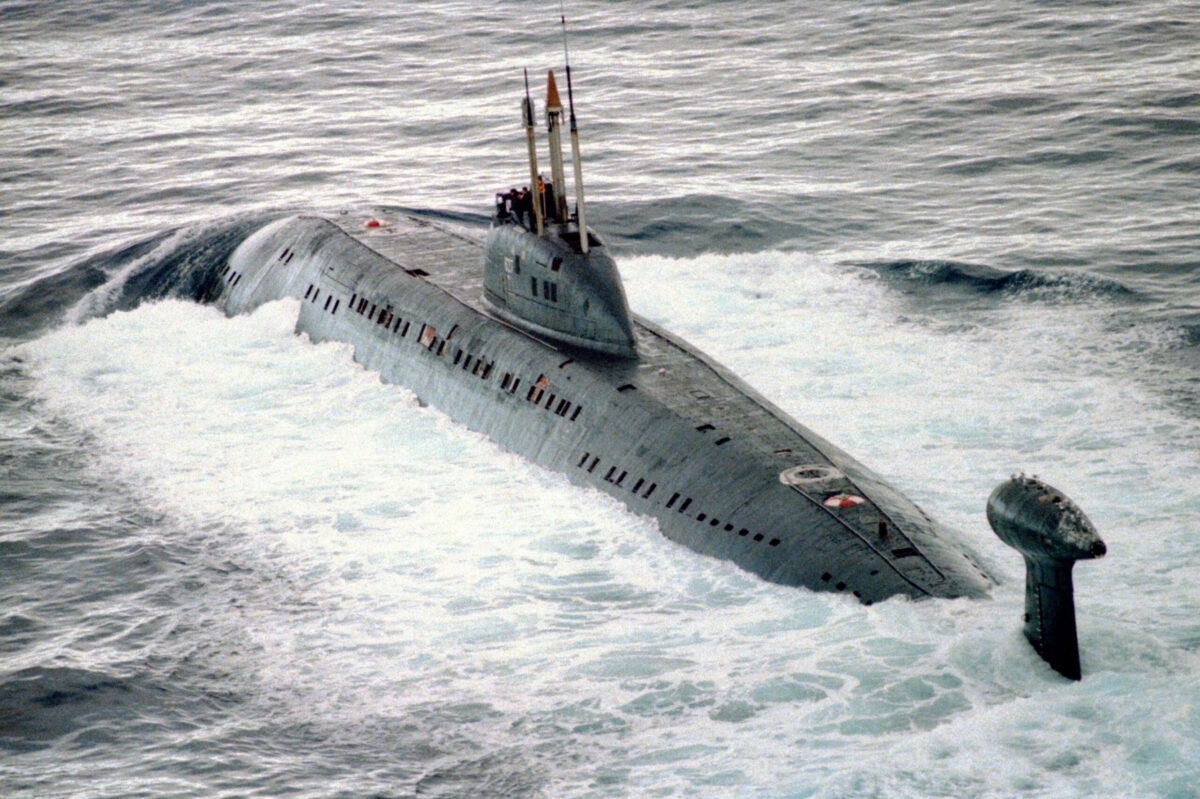While no nation’s military is immune from preventable accidents, Russia’s naval history is riddled with tragedy and disaster. From the sinking of the Kursk to the deadly Losharik submarine fire, Russia’s underwater vessels might appear to take greater risks than their foreign counterparts.
Moscow has a tendency to overuse aging Soviet-era equipment, as it has shown in its war in Ukraine, and the Russian military follows less stringent safety protocols.
Russian Submarine Disaster: What Happened Aboard the Daniil Moskovsky?
When one thinks of Russian submarine mishaps, the Kursk immediately comes to mind.
In 2000, the nuclear-powered K-141 Kursk sank to the bottom of the Barents Sea. All 188 personnel on board were killed while the submarine was participating in a naval exercise.
Russia’s delayed and poor response to locating the Kursk after the accident was widely condemned by international actors. In fact, Moscow even refused aid from other countries who had ships nearby that were capable of detecting the sunken sub.
The Kursk disaster was unquestionably tragic, considering its lethality. Another submarine accident seven years later was also fatal, but easy to overlook in comparison.
In September 2006, a fire aboard the Daniil Moskovsky submarine broke out and killed two onboard. The mishap occurred when the vessel was anchored in the remote Arctic region, near the Norwegian border.
Nicknamed Victor III by NATO, the Project 671RTM Schuka served as an attack submarine for the Russian Northern Fleet. According to the New York Times, this vessel was “designed to carry a crew of 99, but it was not immediately clear how many were aboard at the time of the fire. Interfax reported that a warrant officer and a sailor died in the fire. There were no reports of other injuries.”
A Naval History Plagued by Disaster
The fire onboard the Daniil Moskovsky would not be the last time flames would erupt on a Russian submarine.
In 2008, 20 Russian sailors and shipyard workers were killed when the fire-extinguishing system onboard the K-142 Nerpa activated and caused suffocation. In 2012, half a dozen people were injured when a fire erupted aboard the nuclear-powered submarine Yekaterinburg and blazed for nine hours.
In 2019, 14 crewmembers aboard the Losharik died when a fire broke out. While the Kremlin claimed that this submarine was merely a search vessel, the presence of a high-ranking submarine commander, Denis Dolonsky, indicates the Losharik was carrying out a high-risk task, or perhaps testing a new capability.
While Russia’s submarine history is pretty bleak, its sole aircraft carrier has also been plagued by a series of unfortunate events throughout its service history. The Admiral Kuznetsov carrier has suffered from fires, a floating crane falling onto its ship deck, and an embarrassing deployment history.
Maya Carlin, a Senior Editor for 19FortyFive, is an analyst with the Center for Security Policy and a former Anna Sobol Levy Fellow at IDC Herzliya in Israel. She has by-lines in many publications, including The National Interest, Jerusalem Post, and Times of Israel. You can follow her on Twitter: @MayaCarlin.
From the Vault
The Navy Sent 4 Battleships To Attack North Korea
‘Sir, We Hit a Russian Submarine’: A U.S. Navy Sub Collided with a Nuclear Attack Sub

